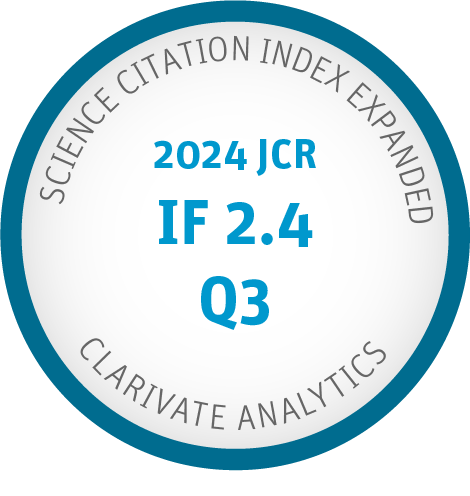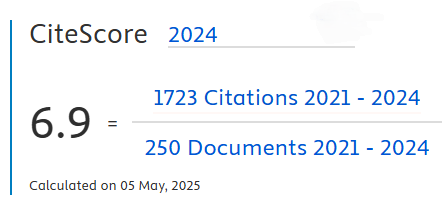A Realtime Classroom Assessment System for Analysis of Students’ Evaluation of Teaching Through a Deep Learning and Emotional Contagion Mechanism
DOI:
https://doi.org/10.9781/ijimai.2025.03.002Keywords:
Classroom Assessment Scoring System, Deep Learning, Emotional Contagion, Long Short-Term Memory, Teaching EvaluationAbstract
Student evaluations of teacher performance are often derived from end-of-semester assessments, significantly impacting the authenticity of teaching evaluations but failing to provide real-time feedback. In addition, teachers' emotional states affect student performance, including in terms of learning motivation and classroom participation, which reflect the students' emotional state. This teacher-student emotional contagion mechanism focuses on the interaction of teacher-student emotions and can be used to observe the quality of instructional performance. Therefore, automatically detecting teacher-student emotional interaction and then providing real-time class satisfaction feedback can provide teachers with a more effective basis for adjusting classroom content. This research proposes an end-to-end classroom real-time teaching evaluation system based on automatic facial-emotion recognition, which can accurately detect and directly analyze the emotions of students and teachers in streaming frames. The system consists of two parts: First, a YOLO model based on deep learning approaches is used to automatically detect the emotional states of teachers and students during the teaching process; Then, combining the emotional contagion mechanism with the teaching evaluation scale, teaching satisfaction can be predicted using a Long Short-Term Memory (LSTM) model to output a classroom satisfaction score within a fixed period. Further analysis of the testing dataset confirms that the model has a high reliability in predicting teaching satisfaction. Research results show the proposed system can achieve an emotional recognition accuracy rate of 98.1% for teachers and 99.5% for students based on the emotion datasets. Further development could potentially provide teachers with strategies to improve classroom teaching effectiveness, better understand students' emotions and learning motivation, and improve learning outcomes.
Downloads
References
D. Cavaliere, G. Fenza, V. Loia, F. Nota. “Emotion-Aware Monitoring of Users’ Reaction With a Multi-Perspective Analysis of Long- and ShortTerm Topics on Twitter,” International Journal of Interactive Multimedia and Artificial Intelligence, vol. 8, no. 4, pp. 166-175, 2023, doi:10.9781/ijimai.2023.02.003.
L. Tang, Y.S. Su. “Ethical Implications and Principles of Using Artificial Intelligence Models in the Classroom: A Systematic Literature Review,” International Journal of Interactive Multimedia and Artificial Intelligence, vol. 8, no. 5, pp. 25-36, 2024, doi:10.9781/ijimai.2024.02.010.
E. Hatfield, J. T. Cacioppo, and R. L. Rapson, Emotional contagion, New York: Cambridge University, 1994.
J. Kim. “The quality of social relationships in schools and adult health: Differential effects of student–student versus student–teacher relationships,“ School Psychology, vol. 36, no. 1, pp. 6–16, 2021, doi: 10.1037/spq0000373.
B. L. Fredrickson. “The role of positive emotions in positive psychology: the broaden-and-build theory of positive emotions,“ American psychologist, vol. 56, no.3, pp. 218–226, 2001, doi: 10.1037/0003-066X.56.3.218.
J. E. Nurmi, and N. Kiuru, “Students’ evocative impact on teacher instruction and teacher–child relationships: Theoretical background and an overview of previous research, “ International Journal of Behavioral Development, vol.39, no.5, pp. 445-457, 2015, doi: 10.1177/0165025415592514.
A. C. Frenzel, D. Fiedler, A. K. Marx, C. Reck, and R. Pekrun, “Who Enjoys Teaching, and When? Between- and Within-Person Evidence on Teachers’ Appraisal-Emotion Links,” Frontiers in Psychology, vol.11, 1092, 2020, doi: 10.3389/fpsyg.2020.01092.
D. Keltner, J. L. Tracy, D. Sauter, and A. Cowen, “What basic emotion theory really says for the twenty-first century study of emotion,” Journal of nonverbal behavior, vol. 43, no.2, pp. 195-201, 2019, doi: 10.1007/s10919- 019-00298-y.
M. L. Chang, “Emotion display rules, emotion regulation, and teacher burnout,” Frontiers in Education, vol. 5, pp. 90, 2020, doi: 10.3389/ feduc.2020.00090.
K. R. Scherer, “What are emotions? And how can they be measured?,” Social science information, vol. 44, no. 4, pp. 695-729, 2005, doi: 10.1177/0539018405058216.
P. Ekman, and W. V. Friesen, “Facial action coding system”, Environmental Psychology & Nonverbal Behavior, 1978.
S. D’Mello, “A selective meta-analysis on the relative incidence of discrete affective states during learning with technology,” Journal of Educational Psychology, vol. 105, no. 4, pp.1082–1099, 2013. doi: 10.1037/A0032674.
S. Poria, E. Cambria, R. Bajpai, and A. Hussain, “A review of affective computing: From unimodal analysis to multimodal fusion,” Information Fusion, vol. 37, pp. 98-125, 2017. doi: 10.1016/J.INFFUS.2017.02.003.
E. Yadegaridehkordi, N.F.B. Mohd Noor, M.N.B. Ayub, H.B. Affal, and N.B. Hussin, “Affective computing in education: A systematic review and future research”, Computers & Education, vol. 142, 103649, 2019.
G. E. Lancia, “Instructor’s Emotional Responses during Online Asynchronous Teaching,” Ph.D. dissertation, Department of Applied Psychology and Human Development, University of Toronto, Toronto, Canada, 2021.
J. Liu, and X. Wu, “Prototype of Educational Affective Arousal Evaluation System Based on Facial and Speech Emotion Recognition,” International Journal of Information and Education Technology, vol. 9, no. 9, pp. 645-651, 2019, doi: 10.18178/ijiet.2019.9.9.1282.
J. Glenn, yolov5. Accessed: Jun. 14, 2024. [Online]. Available: GitHub https://github.com/ultralytics/yolov5.
C. Darwin, “The expression of the emotions in man and animals,” The Journal of Nervous and Mental Disease, vol. 123, no. 1, pp. 90, 1956. doi: 10.1097/00005053-195601000-00016.
P. Riley, “An adult attachment perspective on the student-teacher relationship & classroom management difficulties,” Teaching and Teacher Education, vol. 25, pp. 626–635, 2009. doi: 10.1016/J.TATE.2008.11.018.
P. Riley, “Attachment theory and the teacher-student relationship,” London: Routledge, 2011.
A. C. Frenzel, T. Goetz, O. Lüdtke, R. Pekrun, and R. E. Sutton, “Emotional transmission in the classroom: Exploring the relationship between teacher and student enjoyment,” Journal of educational psychology, vol. 101, no. 3, pp. 705-716, 2009. doi: 10.1037/A0014695.
A. B. Bakker, “Flow among music teachers and their students: The crossover of peak experiences,” Journal of vocational behavior, vol. 66, no. 1, pp.26-44, 2005. doi: 10.1016/J.JVB.2003.11.001.
P. M. Podsakoff, S. B. MacKenzie, J. Y. Lee, and N. P. Podsakoff, “Common method biases in behavioral research: a critical review of the literature and recommended remedies,” Journal of applied psychology, vol. 88, no.5, pp. 879-903, 2003. doi: 10.1037/0021-9010.88.5.879.
E. S. Becker, M. M. Keller, T. Goetz, A. C. Frenzel, and J. L. Taxer, “Antecedents of teachers’ emotions in the classroom: an intraindividual approach,” Frontiers in psychology, vol. 6, 635, 2015. doi: 10.3389/ fpsyg.2015.00635.
T. Goetz, M. Bieg, O. Lüdtke, R. Pekrun, and N. C. Hall, “Do girls really experience more anxiety in mathematics?,” Psychological science, vol. 24, no. 10, pp. 2079- 2087, 2013. doi: 10.1177/0956797613486989.
R. Akbari, R. G. Samar, G. R. Kiany, and M. Tahernia, “A qualitative study of EFL teachers’ emotion regulation behavior in the classroom,” Theory and practice in Language Studies, vol. 7, no. 4, pp. 311-321, 2017. doi: 10.17507/TPLS.0704.10.
R. E. Sutton, and K. F. Wheatley, “Teachers’ emotions and teaching: A review of the literature and directions for future research,” Educational psychology review, vol. 15, no. 4, pp. 327-358, 2003. doi: 10.1023/A:1026131715856.
O. L. Siu, C. L. Cooper, and D. R. Phillips, “Intervention studies on enhancing work well-being, reducing burnout, and improving recovery experiences among Hong Kong health care workers and teachers,” International Journal of Stress Management, vol. 21, no. 1, pp. 69-84, 2014. doi: 10.1037/A0033291.
H. Yin, S. Huang, and W. Wang, “Work environment characteristics and teacher well-being: The mediation of emotion regulation strategies,” International journal of environmental research and public health, vol. 13, no. 9, 2016. doi: 10.3390/ijerph13090907
T. Heydarnejad, A. Hosseini Fatemi, and B. Ghonsooly, “Emotions and self-regulation: A case of Iranian EFL high school and private language institute teachers,” International Journal of Educational Investigations, vol. 4, no. 4, pp. 82-100, 2017.
N. D. Dobransky, and A. B. Frymier, “Developing teacher‐student relationships through out of class communication,” Communication Quarterly, vol. 52, no.3, pp. 211-223, 2004. doi: 10.1080/01463370409370193.
W. K. Berg, and M. Davis, “Associative learning modifies startle reflexes at the lateral lemniscus,” Behavioral Neuroscience, vol. 99, no. 2, pp. 191- 199. 1985. doi: 10.1037/0735-7044.99.2.191.
J. D. Laird, and C. Bresler, “The process of emotional experience: A selfperception theory,” In Emotion, M. S. Clark Ed., Thousand Oaks, CA, USA: Sage Publications, Inc., 1992. pp. 213–234.
P. Ekman, “Facial expression and emotion,” American psychologist, vol. 48, no. 4, pp. 384–392, 1993. doi: 10.1037/0003-066X.48.4.384.
T. Hennig-Thurau, M. Groth, M. Paul, and D. D. Gremler, “Are all smiles created equal? How emotional contagion and emotional labor affect service relationships,” Journal of Marketing, vol. 70, no. 3, pp. 58-73. 2006. doi: 10.1509/JMKG.70.3.58.
P. Ekman, “An argument for basic emotions,” Cognition & emotion, vol. 6, pp. 169- 200, 1992. doi: 10.1080/02699939208411068.
R. W. Picard, “Affective computing” Cambridge, MA, USA: MIT press, 1997.
L. Shen, M. Wang, and R. Shen, “Affective e-learning: Using “emotional” data to improve learning in pervasive learning environment,” Journal of Educational Technology & Society, vol. 12, no. 2, pp. 176-189.
S. Yang, P. Luo, C.C. Loy, and X. Tang, X. “WIDER FACE: A Face Detection Benchmark,” Proceedings of the IEEE Conference on Computer Vision and Pattern Recognition (CVPR), pp. 5525-5533, 2016.
G. E. Box, G. M. Jenkins, G. C. Reinsel, and G. M. Ljung, “Time series analysis: forecasting and control”, Hoboken, NY, USA: Wiley, 2015.
K.C. Lin, N.T. Li, and M.Y. Chen, “Sustainable education on improving the quality of peer assessment: design and implementation of an online deep learning-based peer assessment system,” Library Hi Tech, Vol. ahead-ofprint No. ahead-of-print, 2024. doi:10.1108/LHT-11-2023-0569.
T.C. Huang, M.Y. Chen, and W.P. Hsu, “Do Learning Styles Matter? Motivating Learners in an Augmented GeoPark,” Journal of Educational Technology & Society, vol. 22, no. 1, pp. 70-81, 2019.
K.L. Hsiao, T.C. Huang, M.Y. Chen, and N.T. Chiang, “Understanding the behavioral intention to play Austronesian learning games: from the perspectives of learning outcome, service quality, and hedonic value,” Interactive Learning Environments, vol. 26, no.3, pp. 372-385, 2018.
K.M. La Paro, and R.C. Pianta, “Classroom Assessment Scoring System (CLASS),” 2003. APA PsycTests.
S.M. Gamlem, “Mapping Teaching Through Interactions and Pupils’ Learning in Mathematics,” SAGE Open, July-September 2019, pp. 13. doi:10.1177/2158244019861485.
C. Evertsen, I. Størksen, and N. Kucirkova, “Professionals’ Perceptions of the Classroom Assessment Scoring System as a structure for professional community and development”, European Early Childhood Education Research Journal, vol. 30, no. 5, pp. 701-714, 2022.
C. Evertsen, I. Størksen, K.B. Tharaldsen, and N. Kucirkova, “Gains and challenges with the Classroom Assessment Scoring System in a social pedagogical tradition”, Frontiers in Education, vol. 7, 965174, 2023. doi: 10.3389/feduc.2022.965174
Downloads
Published
-
Abstract64
-
PDF28








